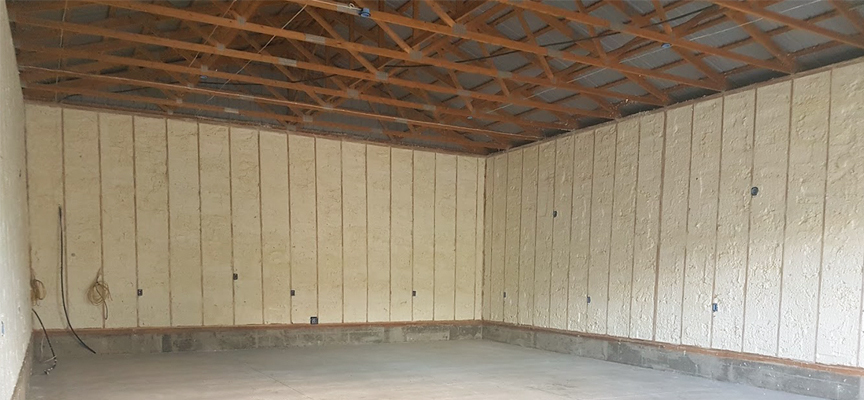
When homeowners start planning a major renovation, their focus often shifts to visual elements—new cabinetry, upgraded flooring, modern lighting, and open-concept layouts.
While these features add value and beauty, the structural and performance aspects of your home should never be overlooked. One of the most critical yet commonly neglected components during renovation is insulation.
If you’re tearing down walls, converting a basement, or adding living space, upgrading your insulation isn’t just an add-on—it’s a smart investment.
Working with experienced insulation contractors in Edmonton can ensure that your upgrades meet the highest standards of efficiency and safety.
Why Insulation Deserves A Top Spot In Your Renovation Plan
Renovations are expensive and time-consuming. So, why add insulation to the list? Because it’s one of the few upgrades that pays off every single day.
Energy Efficiency: Cut Down Heating And Cooling Costs
Alberta homeowners know all too well how brutal the winters can get—and how high the heating bills can climb. Without proper insulation, your HVAC system works overtime, leaking conditioned air and wasting energy.
Adding or upgrading insulation during a renovation allows you to reach behind the walls, into the ceilings, and under the floors—areas that are normally hidden. This is a golden opportunity to install premium spray foam insulation that offers airtight protection.
Comfort: Keep Your Home Warm In Winter And Cool In Summer
Good insulation reduces drafts, stabilizes indoor temperatures, and improves indoor air quality by minimizing outside air intrusion. With Edmonton’s climate extremes, this means fewer cold spots in winter and less overheating in the summer.
Sound Control: Block Out Noise For Peace Of Mind
If you’re renovating a basement into a media room or converting your attic into a home office, insulation can play a major role in sound management. While spray foam insulation is not technically a soundproofing solution, it helps reduce noise by sealing gaps where sound typically travels.
When Is The Best Time To Upgrade Insulation?
The best time to upgrade insulation is when you already have walls open. If you’re:
- Finishing a basement
- Renovating a kitchen or bathroom
- Adding a room or building an addition
- Replacing drywall or flooring
This is the moment to consult professional insulation contractors who specialize in spray foam and blown-in insulation.
Delaying insulation upgrades means missed opportunities and increased costs later. Once the walls are sealed again, going back in becomes more invasive and expensive.
Choosing The Right Insulation Type For Your Renovation
Insulation isn’t one-size-fits-all. Depending on the scope of your renovation and the parts of your home being upgraded, different types of insulation may be suitable.
Spray Foam Insulation: The Gold Standard For Efficiency
Spray foam is widely considered the most effective solution for residential insulation. It expands on contact, sealing every gap, corner, and crevice to create an airtight envelope. Classic Spray Foam uses Insulthane® 450 NM ocSPF, one of the industry’s most trusted open-cell spray foam products.
Spray foam:
- Prevents air movement, minimizing condensation risk
- Improves R-value more efficiently than other types
- Supports long-term energy savings
Keep in mind, spray foam does not make your home waterproof or soundproof but it is excellent at reducing airflow, which indirectly supports both goals.
Blown-In Insulation: A Secondary Option For Certain Areas
While not as high-performing as spray foam, blown-in insulation is still used in areas like attics or wall cavities. It’s often chosen for its cost-effectiveness, though it only contributes a small portion to Classic Spray Foam’s business due to its lower performance.
Fire Protection: Don’t Skip The Thermal Barrier
If your renovation involves exposed spray foam in basements, garages, or utility rooms, fire protection becomes essential. That’s where DC315 fireproof paint comes in.
It’s a thermal barrier coating applied over spray foam to meet fire safety codes. It doesn’t just help with compliance; it enhances peace of mind.
Insulation Options At A Glance
Here is a quick comparison of insulation types used in home renovations:
| Insulation Type | Key Benefit | Ideal Areas | Common Use by Classic Spray Foam |
| Spray Foam | Airtight seal & highest R-value | Walls, basements, crawl spaces | Primary |
| Blown-In Insulation | Budget-friendly, good coverage | Attics, wall cavities (retrofits) | Occasional |
| DC315 Fireproof Paint | Fire protection over spray foam | Exposed foam areas (garage, basement) | As Needed |
Why Work With Professional Insulation Contractors?
DIY insulation might look tempting on YouTube, but the risks far outweigh the savings. Proper insulation installation requires:
- Knowledge of local building codes
- Access to high-quality materials
- Proper safety measures (especially with spray foam)
- Expertise in application and coverage
Working with trusted insulation contractors in Edmonton ensures your renovation meets energy standards, fire codes, and long-term performance goals.
Areas To Prioritize For Insulation During Renovation
If your budget or renovation scope doesn’t allow for full-house insulation, focus on the following high-impact areas:
1. Exterior Walls
These are the main battlegrounds for heat loss. If you’re reconfiguring rooms or replacing drywall, insulate those exterior walls with spray foam.
2. Attic Spaces
Even partial attic renovations should trigger a conversation about insulation. Heat rises, and an uninsulated attic can cause substantial energy loss.
3. Basements
Finished basements without proper insulation can feel cold, damp, and drafty. Spray foam is perfect for creating a thermal break between concrete and interior living spaces.
4. Crawl Spaces And Rim Joists
Often forgotten, crawl spaces and rim joists are notorious for air leaks. Spray foam creates a tight seal, making these tricky areas more energy efficient.
About Classic Spray Foam
Classic Spray Foam is a trusted insulation contractor based in Edmonton, Alberta, specializing in spray foam insulation for residential, commercial, and industrial applications.
Whether you’re renovating a custom home or planning a basement finish, Classic Spray Foam delivers airtight, energy-efficient insulation solutions tailored to Edmonton’s unique climate.
Contact us today through the website for more information.